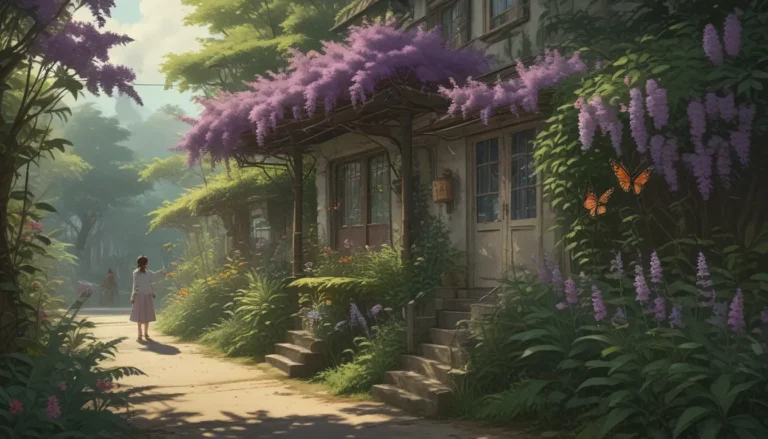A Comprehensive Guide to Managing Wasps in Your Home and Garden

Wasps, often mistaken for bees, can be a nuisance when they invade your living space or become a hazard to your family. These six-legged creatures are not only bothersome but can also deliver painful stings. However, before you rush to eliminate all wasps from your garden, it’s essential to understand that not all wasps are harmful. In fact, many species of wasps are beneficial insects that prey on garden pests and contribute to pollination.
In this comprehensive guide, we will delve into the world of wasps, covering topics such as identification, biology and life cycle, organic control methods, and chemical pesticide options. By the end of this article, you’ll be equipped with the knowledge to effectively manage wasps in your home and garden.
Understanding Wasps
Wasps are part of the order Hymenoptera, which includes bees and ants. While some wasp species are harmless, social species from the Vespidae family, such as yellow jackets, hornets, and paper wasps, are often associated with negative encounters. These species can be aggressive and tend to build nests near human activity areas.
Here’s what you need to know about wasps:
- They can sting multiple times, unlike bees that can only sting once before dying.
- Wasps are attracted to sweets and savory foods, including meat.
- Differentiate bees from wasps based on their feeding habits and stinging behavior.
- While some wasps are beneficial garden predators, others can be a nuisance when they invade your living space.
Identifying Common Wasp Species
Understanding the various species of wasps can help you determine the best approach for managing them. Here are some common types of wasps you may encounter:
- Yellow Jackets: These wasps are characterized by their hard, shiny bodies with black and yellow markings. They build large nests above or below ground, housing hundreds to thousands of individuals.
- Paper Wasps: Identified by their slender bodies and long legs, paper wasps create small nests with an open umbrella shape. They are often found near orchards and vineyards.
- Hornets: With a variety of colors, hornets are known for their painful stings. Baldfaced hornets and European hornets are common species with distinctive nests.
- Solitary Wasps: While less of a pest than social wasps, solitary species like mud daubers and cicada killers can still be found in gardens. These insects are beneficial predators and rarely aggressive.
The Biology and Life Cycle of Wasps
Understanding the life cycle of wasps can help you predict their behavior and plan appropriate control strategies. Wasps go through four stages: egg, larva, pupa, and adult. Social colonies typically survive for one year, with only the newly mated queens overwintering.
Here’s a brief overview of the wasp life cycle:
- Spring: Queens emerge from overwintering sites to start new nests.
- Summer: Worker wasps emerge to maintain the colony and forage for food.
- Fall: Male and fertile female wasps are produced for mating.
- Winter: Fertile females overwinter to start new colonies in the spring.
Understanding these cycles can help you anticipate wasp activity and plan control measures accordingly.
Organic Control Methods for Managing Wasps
When it comes to managing wasps without chemicals, there are several options available. Here are some organic control methods for dealing with these insects:
- Sanitation: Keep your outdoor area clean to prevent attracting wasps.
- Traps: Use commercial traps or create DIY traps to catch wasps.
- Preventive Measures: Seal cracks in buildings and caulk entry points to deter wasps.
- Observe and Act: Monitor wasp activity and remove nests when necessary.
These methods can help reduce wasp populations and prevent nuisance encounters in your home and garden.
Chemical Pesticide Control Options for Severe Infestations
In cases of severe wasp infestations, chemical pesticides may be necessary. When using chemical products, it’s essential to follow safety precautions and apply them correctly. Here are some tips for using chemical pesticides to control wasps:
- Selective Products: Choose pesticides labeled for wasps and hornets based on nest location.
- Protective Gear: Wear protective clothing when applying pesticides to avoid stings.
- Application Timing: Apply pesticides early in the morning or late in the evening when wasps are less active.
- Proper Disposal: Dispose of empty pesticide containers safely to prevent environmental contamination.
By following these guidelines, you can effectively manage severe wasp infestations using chemical pesticide control methods.
Balancing Benefits and Risks: Good Guys and Bad Guys
While wasps can be valuable garden predators, their presence near human activity areas can pose risks to your family. It’s crucial to weigh the benefits of having wasps in your garden against the potential hazards they may present. By understanding the behavior and biology of wasps, you can make informed decisions on managing these insects in your home and garden.
In conclusion, by implementing a combination of organic control methods and chemical pesticide options, you can effectively manage wasp populations while minimizing risks to your family. By following the guidelines outlined in this comprehensive guide, you’ll be better equipped to deal with wasp infestations and maintain a healthy balance in your garden ecosystem.
Have you encountered wasp nests on your property? Share your experiences and strategies for managing wasps in the comments below!
Continue expanding your knowledge of insect control in the garden by exploring our guides on various backyard pests and beneficial insects. Remember, a well-informed approach is key to maintaining a harmonious garden environment.
Remember, when dealing with wasp infestations, safety should always be a top priority. If you have concerns about managing wasps on your property, consider consulting pest management professionals for assistance.
*





